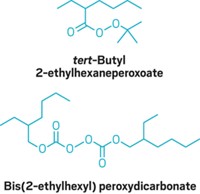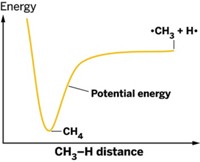Advertisement
Grab your lab coat. Let's get started
Welcome!
Welcome!
Create an account below to get 6 C&EN articles per month, receive newsletters and more - all free.
It seems this is your first time logging in online. Please enter the following information to continue.
As an ACS member you automatically get access to this site. All we need is few more details to create your reading experience.
Not you? Sign in with a different account.
Not you? Sign in with a different account.
ERROR 1
ERROR 1
ERROR 2
ERROR 2
ERROR 2
ERROR 2
ERROR 2
Password and Confirm password must match.
If you have an ACS member number, please enter it here so we can link this account to your membership. (optional)
ERROR 2
ACS values your privacy. By submitting your information, you are gaining access to C&EN and subscribing to our weekly newsletter. We use the information you provide to make your reading experience better, and we will never sell your data to third party members.
Synthesis
Detonation Pushes Limits Of Chemistry
Molecular dynamics simulation examines explosives too dangerous for lab handling
by Elizabeth K. Wilson
July 30, 2012
| A version of this story appeared in
Volume 90, Issue 31
The detonation of a nitrogen-based primary explosive occurs so quickly that it approaches the fundamental limits of chemistry, scientists report (Phys. Rev. Lett., DOI: 10.1103/physrevlett.109.038301). Detonations are difficult to study in the lab because the extreme sensitivity of these compounds carries a high risk of accidental explosions. Now, Evan J. Reed of Stanford University and colleagues have performed the first molecular dynamics simulation of a detonation of an azide, the primary explosive hydrazoic acid, which is sensitive to friction and heat. Previously, scientists have simulated the detonation of secondary explosives, which require a detonator to set them off. Such explosions occur on the order of a nanosecond. But the detonation of hydrazoic acid, from start to decomposition, occurs in only 10 picoseconds, which is on the order of vibrational timescales. “This reaction is likely one of the fastest naturally occurring chemical reactions,” write the researchers, and is surpassed only by ultrafast, photon-induced reactions. The researchers posit that this ultrafast chemistry may also be generalized to the detonation of other nitrogen-rich, high-energy-density materials such as N4, N5 ions, and polynitrogen.





Join the conversation
Contact the reporter
Submit a Letter to the Editor for publication
Engage with us on Twitter